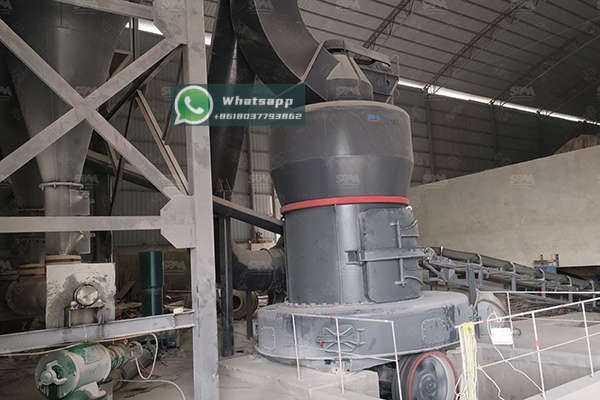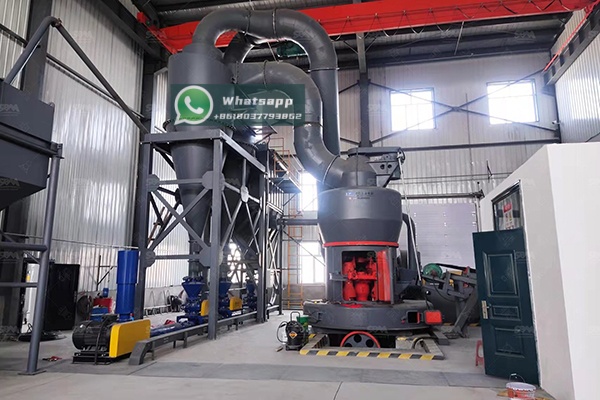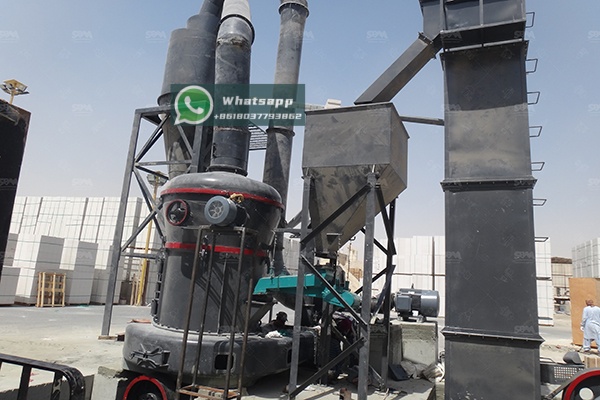The high-frequency cable industry represents one of the most demanding sectors in terms of material performance, particularly for insulating and filler compounds. As signal frequencies increase into the gigahertz range, the dielectric properties of every component become critical to minimizing signal loss and maintaining integrity. Among the various mineral fillers used, talc has emerged as a superior material due to its unique combination of electrical insulation, thermal stability, and reinforcement capabilities. However, not all talc is created equal. The performance of talc in high-frequency applications is intrinsically linked to its particle size distribution, purity, and morphological characteristics. This article explores the specialized process of producing ultrafine talc tailored for the high-frequency cable industry and highlights the advanced grinding technology required to achieve the necessary specifications.

High-frequency cables, used in telecommunications, data centers, radar systems, and advanced medical imaging equipment, require insulating materials with exceptionally low dielectric constant (Dk) and dissipation factor (Df). Talc, a hydrous magnesium silicate, naturally possesses these desirable electrical properties. When incorporated into polymer matrices such as polypropylene (PP) or fluoropolymers, ultrafine talc improves the composite’s mechanical strength, heat resistance, and most importantly, its electrical performance.
The fineness of the talc powder is paramount. Coarse particles can act as defects within the insulation layer, creating points of electrical stress concentration that lead to partial discharge and eventual breakdown. Furthermore, larger particles can scatter high-frequency signals, increasing attenuation. Ultrafine talc, typically with a top cut (D97) below 10 microns and often targeting a D50 of 1-2 microns, ensures a homogeneous dispersion within the polymer. This homogeneity translates to consistent dielectric properties across the entire insulation layer, which is non-negotiable for reliable high-speed data transmission.
Producing talc powder that meets the stringent requirements of the cable industry involves overcoming several significant challenges. The primary objective is to achieve the target fineness without degrading the talc’s lamellar (plate-like) structure. This platelet morphology is key to talc’s functionality, as it enhances barrier properties and mechanical reinforcement in the final composite. Aggressive grinding methods that destroy this structure, creating more equiaxial particles, will compromise the performance of the final product.
Another critical challenge is controlling heat generation during milling. Excessive heat can drive off the structural water from the talc (which occurs above approximately 800°C, but degradation can start at lower temperatures with prolonged exposure), altering its chemical composition and electrical properties. Therefore, grinding equipment must be capable of efficient operation with effective cooling systems or designs that minimize heat buildup.
Finally, achieving a narrow particle size distribution is essential. A wide distribution, containing both very fine and relatively coarse particles, can lead to packing issues and variability in the polymer composite. The ideal grinding system delivers a steep distribution curve, ensuring that the majority of particles are within a tight size range optimal for the application.

Traditional grinding mills like ball mills or Raymond mills often fall short of meeting these demanding criteria. Ball mills can cause contamination from grinding media and are inefficient for achieving ultrafine sizes with a narrow distribution. Conventional Raymond mills are typically limited to coarser grinds. The industry, therefore, relies on advanced, classified grinding systems that integrate milling and air classification in a single, efficient process.
For producing the high-purity, ultrafine talc required by the high-frequency cable sector, the LUM Ultrafine Vertical Mill represents an ideal technological solution. This mill is engineered specifically for the production of superfine powders and offers distinct advantages for processing sensitive minerals like talc.
The LUM series mill integrates grinding, classification, and drying within a compact vertical structure. Its grinding principle applies pressure rather than impact, which is more effective at delaminating the talc platelets while preserving their structure. The integrated high-efficiency classifier allows for precise control over the top particle size, enabling the production of talc with a consistent and steep particle size distribution, crucial for cable compound performance.
Below is a technical specification table for the LUM Ultrafine Vertical Mill, illustrating its capability for high-grade talc production:
| Model | Main machine power (kW) | Capacity (t/h) | Size distribution D97 (μm) |
|---|---|---|---|
| LUM1125 | 90-110 | 0.7-5.0 | 5-30 |
| LUM1436 | 160-200 | 1.2-8.5 | 5-30 |
| LUM1525 | 220-250 | 1.6-11.5 | 5-30 |
| LUM1632 | 280-315 | 2.0-13.5 | 5-30 |
| LUM1836 | 355-400 | 2.3-15 | 5-30 |
For cable manufacturers requiring talc in the slightly coarser but still fine range (e.g., D97 of 45 microns), or for pre-grinding stages, the MTM Medium-Speed Grinding Mill is an excellent and highly efficient choice. It serves as a modern replacement for traditional Raymond mills, offering higher capacity and better energy efficiency.
| Model | Ring roll number (pcs) | Max. feed size (mm) | Output (t/h) | Main unit motor power (kW) |
|---|---|---|---|---|
| MTM100 | 4 | <25 | 3-8 | 37 |
| MTM130 | 5 | <30 | 6-11 | 75 |
| MTM160 | 6 | <35 | 9-22 | 132 |
A typical production line for ultrafine cable-grade talc involves several key stages:

Rigorous quality control is essential throughout the production process. Key parameters monitored for cable-grade talc include:
The relentless advancement of communication technology continues to push the performance boundaries of materials used in high-frequency cables. Ultrafine talc, with its exceptional electrical and mechanical properties, is poised to remain a critical component in high-performance insulating compounds. The ability to consistently produce this specialized material hinges on the deployment of advanced grinding technology like the LUM Ultrafine Vertical Mill from Shanghai Zenith Machinery. By enabling precise control over particle size, distribution, and morphology while preserving the talc’s innate structure, such technology empowers talc producers to meet the exacting standards of the global cable industry, facilitating the high-speed, low-loss data transmission that underpins our modern digital world.